#31 IN THE PRAIRIE DOG’S EYE
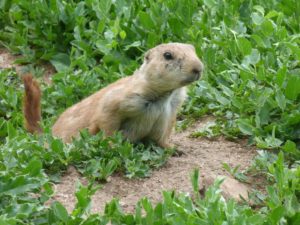
This prairie dog has its eye on you.
If you live in the western US, on the grassland plains, you probably know prairie dogs, whom you can find tunneling vacant lots, quite possibly in your neighborhood.
At least, they’re certainly in my neighborhood. When I walk out through King’s Ridge and take the bike path out to Cottonwood Trail, I pass them foraging away on a triangle of grass between two walkways, and popping up out of their hills in a big swath of field (probably two hundred plus yards) beyond. They’ll stand up on their hind legs and eye your presence with an alert, steady gaze.
I can’t always figure out their behavior. I get that they’ve got a kind of communal warning system for predators–there’s typically a bunch of them out foraging with noses to the ground for anything edible. Since pedestrians and bikers pass them all day long, you’d think they’d be used to that by now, and often they are; you can pass within a five feet of them and they pay you no mind at all. You may be gigantic in comparison, but they’re far more interested in what they’re trying to pick out of the turf.
Then again, lots of times, though I’ve made no move their direction, they shoot back to their mounds, wave their little tails, and give me THE EYE.
So what precisely alarms them (at least about humans) and what doesn’t remains opaque. I get, though, that it’s a communal thing, a neighborhood watch system. Tree squirrels live isolated in their own little family nests, but ground squirrels (i.e., prairie “dogs”–they yip and bark) live in interlinked burrows that make a up a “town.”
Frankly, they have more to fear from humans than anything else–which includes hawks, ferrets, foxes, coyotes, and snakes, hence they have to have vigilance upward, to the horizon, and even down in their burrows to guard against predators. Nevertheless, it’s human beings that have done them the most harm. Much like what happened to the buffalo and the passenger pigeon, prairie dogs two hundred years ago had an estimated population of five billion, but 95% of them are now gone. A naturalist in central Texas circa 1901 found a single prairie dog town labyrinth covered 25,000 square miles with four million inhabitants. Back then, it was a prairie dog world.
Why the genocidal slaughter of prairie dogs? Cattle ranchers viewed them as destroying the grassland for their cattle–and they still do. Ironically, the prairie dog eating habits can keep grasslands as grasslands, preventing infestations of shrubs that can destroy what would otherwise be good grazing land, as well as promote the health of the grasses. A cornerstone species for ecological balance in the west, they’re absolutely viewed as pests to be shot or poisoned en masse. I would guess you don’t want them near your garden or crops, and if the vegetation in their vicinity gets sparse, it will only get sparser.
Not unlike ants and humans, as a cooperative species they can conquer and flourish. They’ve taken up residence in 5,000 acres of Boulder city open space, which has caused some efforts to poison or relocate them. This being Boulder, people get upset when you poison cute little animals. I shudder to think what happens to them in (red) Weld County.
Their town I routinely pass by has visibly expanded out in that huge field, more and more of their mounds emerging to plant their flag farther and farther into once neutral hinterlands. After that unusual and solid month and a half of daily showers we got this year from May into June, suddenly rich greenery had covered their environs, so that at the end of June (just when the grass should be starting to brown up under summer glare), the vegetation got so thick that most of the mounds in that wedge of grassland got stoppered up, surmounted by a small forest of stout, weedy plants.
It made me pause. WTF, I thought. They’re practically drowning under their own food source. Are they going to eat all of that?
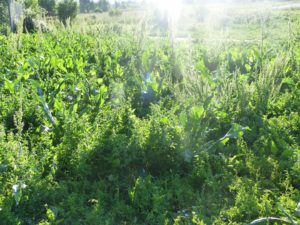
Not to worry, though. By September all the mounds had reemerged, and they’d chomped it down to the turf.
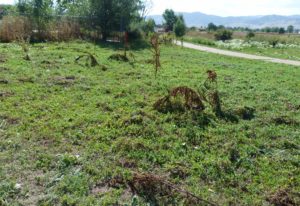
I also often wonder what happens to them in the winter. What do they do when there’s a foot of snow, the temp’s around zero, and the wind’s gusting down from the hills? Well, obviously, they don’t go anywhere. Neither do they hibernate. They go into a kind of “torpor,” and apparently hunker down in their familial suites, perfectly happy to snuggle. When I pass that field in the winter, sometimes they’re all out there foraging away and other times–including the warm, pleasant winter days we get here–there’s not one to be seen.
“Family,” by the way, usually means here a male and two or three females, plus kids, and they will, if they can, fight off any intruders in their burrow space. The males, in fact, average 20 fights a day with other males, keeping their territory sacrosanct. Nevertheless, the females will often put out for outside interlopers, apparently to increase their chances of getting pregnant. It seems like they propagate prolifically, but according to my reading, the female is available for copulation exactly one hour a year!
What an hour that must be (some estimates put it at five or six hours, but still–)! Yikes! And they must have to get busy if they’ve got three wives. Imagine young human males waiting for that window of invitation–or rabbits, who get a full eight months.
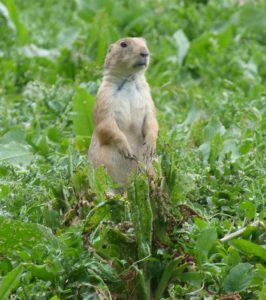
Stay on your toes!
So there’s a rather complicated little society taking place there. Maybe more extraordinary, according to one biologist who has studied their calls extensively, is the possibility that they possess a greater vocabulary than any other species, including whales, dolphins, and non-human primates. It’s something you hear as you walk past, lots of little squeaks, cries, and yips. Sometimes you see them on their hind legs, raising their forepaws, palms out, calling out to their neighbors. What are they calling out about? One researcher I found thought it was a kind of generic warning to be alert. Stay frosty!
But quite surprisingly, when they do deliver warnings about predators, they define what kind of predator, what it looks like, and what direction it’s coming from. They will verbally distinguish a coyote from a person from a snake. They discern size and color, and they tell each other about it. Hey, fat guy in blue coming at two o’clock! They have other discussions that researchers have yet to nail down, like what mothers say murmuring to their children.
So, are they a blight on arable land? Some kind of squirrel imperialists? Or…would they make good pets? I’m glad you asked because apparently they can make good pets. They’re incredibly cute, of course, but I wasn’t prepared for how charming and affectionate they can be with humans, but I found out through this video (3:14). All that snuggling together in burrows underground comes in handy with humans who seem to like that, too. They apparently don’t hold human efforts at their mass extinction against us and respond well to getting fed and having their tummies rubbed. As well, we get a whole new meaning to standing on your hind legs, raising your forepaws, and calling out, “Yahoo!” which means in prairie dog, “Yay! You’re here!”
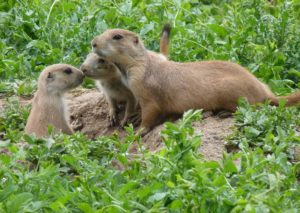
All in the family.

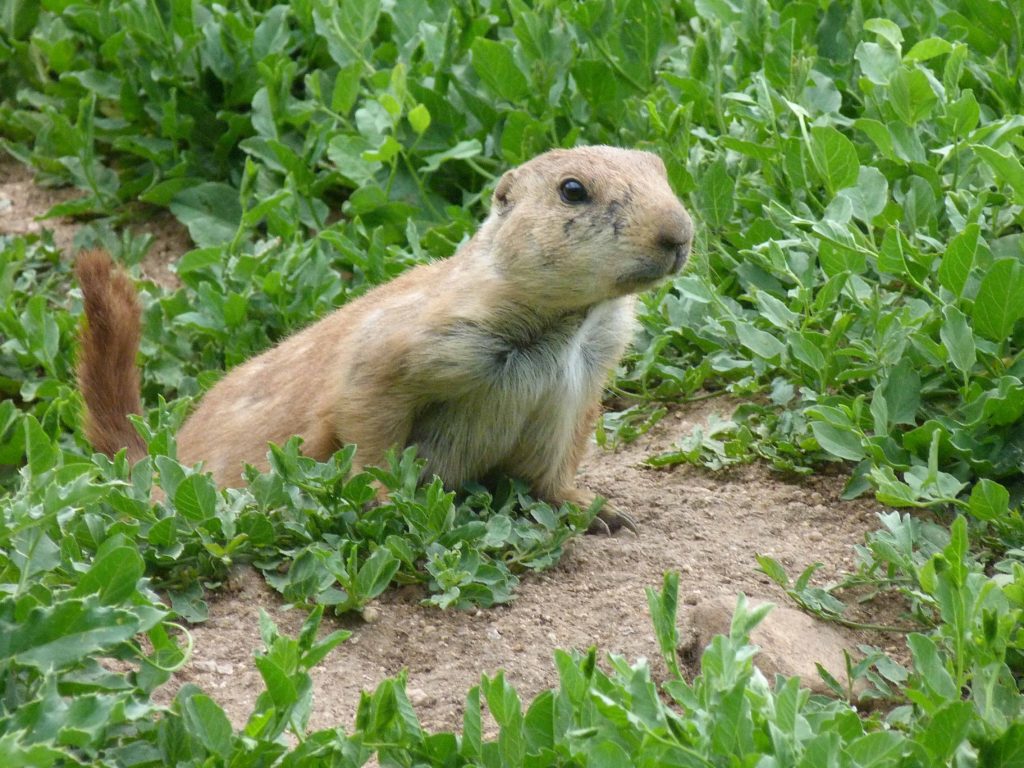
Thanks Gary this made my day.
Gary, now you have me looking at prairie dogs in a whole new way!
Me, I always wonder about them. They got a whole busy life going on there. I walk along the edges of their culture.
Gary, that was a charming lil take on the prairie dog life in one of my favorite bioregions,. How’s it going? — Dennis Formento
I don’t know if I’m doing as well as the prairie dogs, who are clearly having a banner year, but I’m delighted to hear from you and I am still largely above ground.